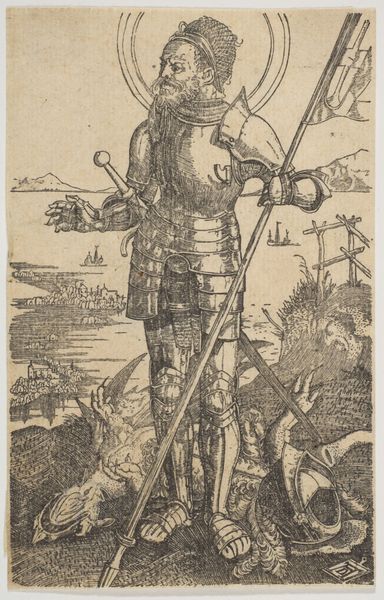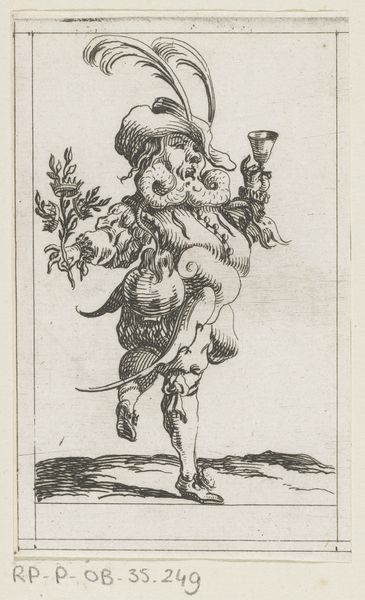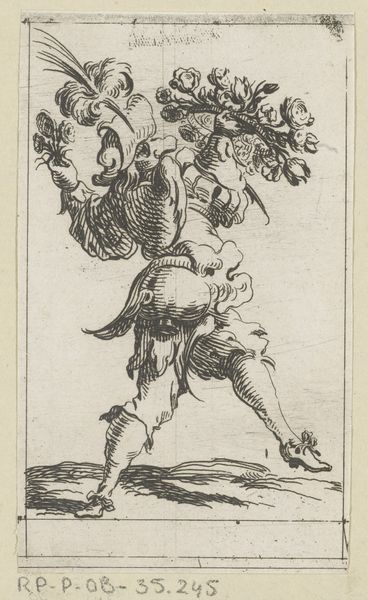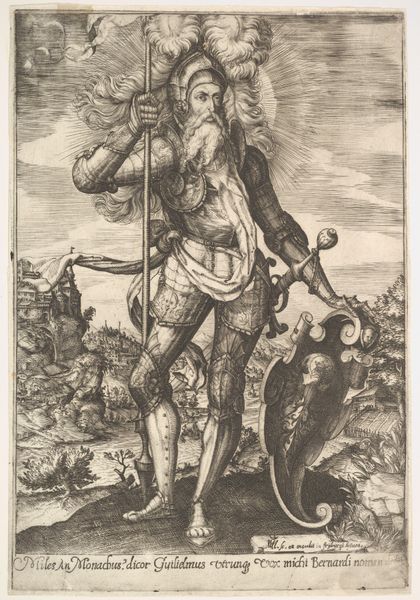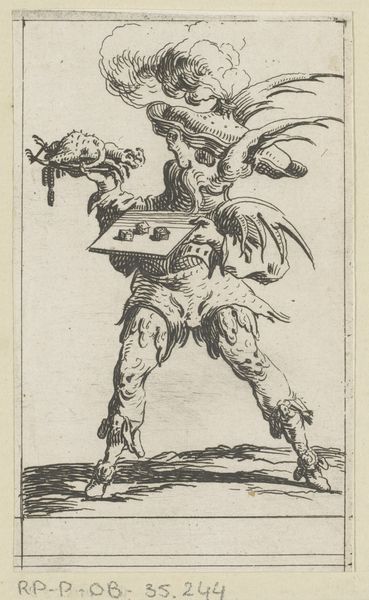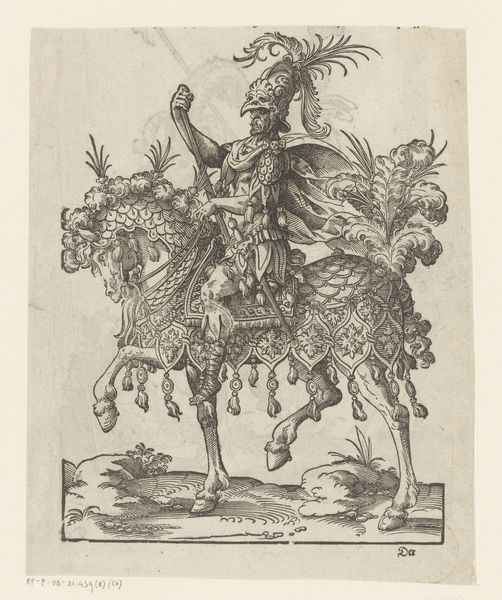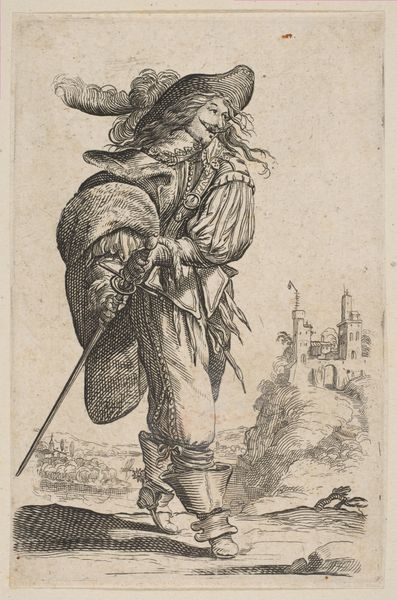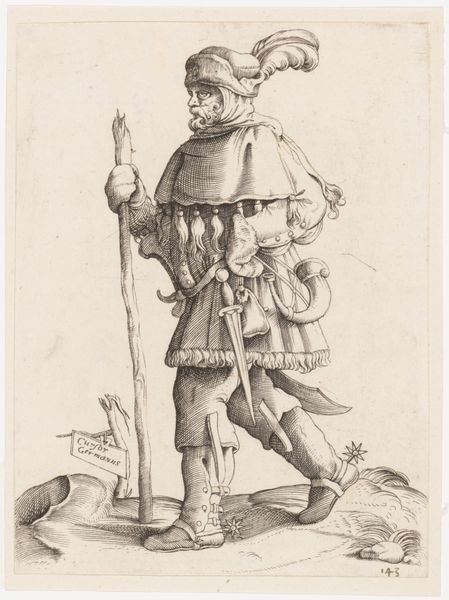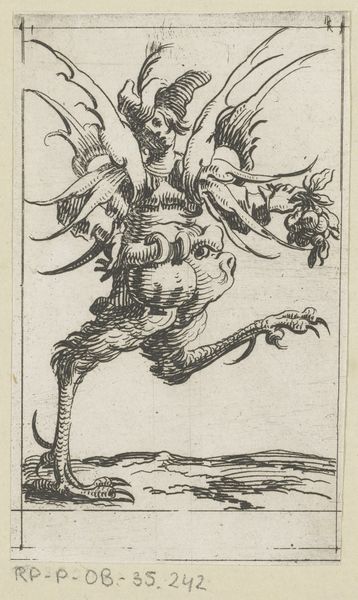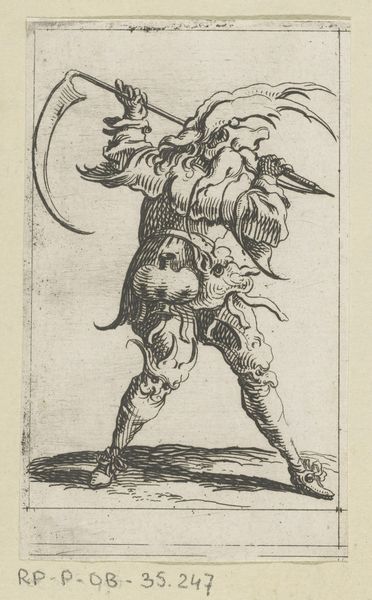
print, engraving
# print
#
mannerism
#
figuration
#
history-painting
#
engraving
Dimensions: height 323 mm, width 214 mm
Copyright: Rijks Museum: Open Domain
Heinrich Wirich made this print, Lijmstokloper, sometime before 1600, using an engraving technique. Look closely and you’ll see how the artist created this image by carefully cutting lines into a metal plate, which would then be inked and printed. It’s a labor-intensive process requiring incredible skill with tools. The fine lines create a wealth of detail. The figure is festooned with the tools of his trade: the limesticks which give the artwork its name, a broom and knife. He looks like an itinerant tradesman, or perhaps even a figure of mockery: the poem incorporated into the image suggests trickery. We can imagine him as a traveling salesman of the period, dependent on his wits to make a living. The print itself would have been relatively affordable. While the making required technical expertise, it could be reproduced many times over. In its own way, this print is a product of emerging capitalism. It challenges any high-minded ideas about the ‘fine arts.’ This artwork asks us to consider how artistry and craft are always bound to the economic realities of their time.
Comments
No comments
Be the first to comment and join the conversation on the ultimate creative platform.

